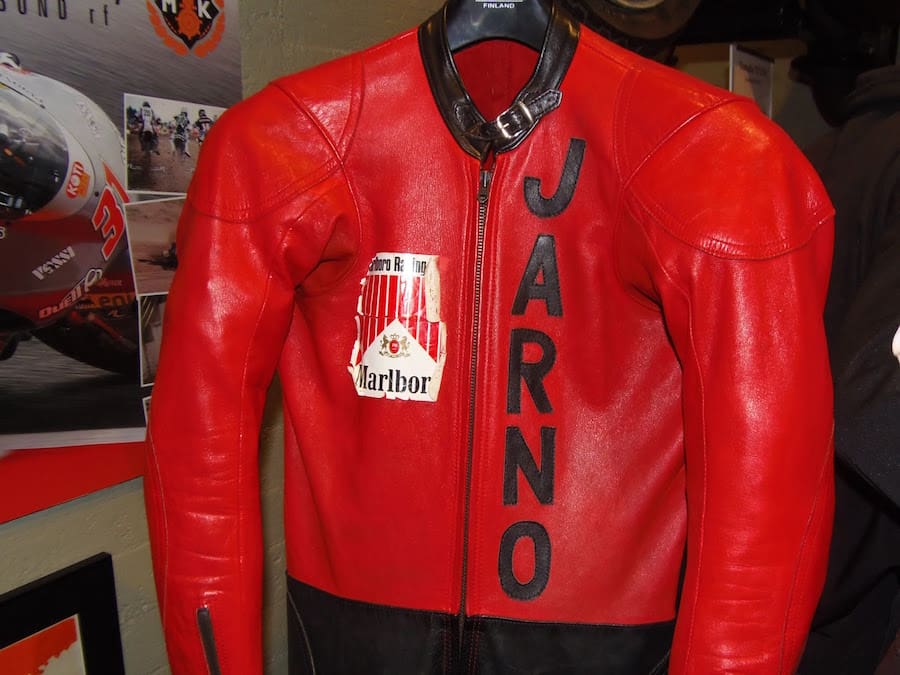In a career cut tragically short, this GP racer left a lasting mark on his sport
Question: Valentino, you’re a keen student of motorcycle grand prix history. Who are your favourite riders from the past, and what do you know of Jarno Saarinen?
Valentino Rossi: My favourite riders are Schwantz, Rainey, Hailwood and Sheene. Saarinen was one of the strongest riders from the past.
Rossi is certainly one of the most successful riders of all time, but how would he have gone against Wayne Rainey at his peak, or Ago and Mike Hailwood at the Isle of Man? Then there is eight-time world champ Phil Read, who never seems to appear on the short list of GOAT candidates – a fact that rankles him.
However, if it weren’t for a twist of fate, the success that Read enjoyed in the 500cc class with MV Agusta in 1973 and ’74 may never have happened. How so? In 1973, a new bike and a new kind of racer – with a style that Rossi still uses as a template today – changed the face of GP racing forever. And he was set for bigger and better things.

His name was Jarno Saarinen.
Born in Turku, in the south-west corner of Finland in 1945, Saarinen was an engineering graduate who would win the Finnish ice race and road race championships, becoming the first rider to successfully transfer off-road racing techniques to the tar. Before Saarinen, road racers who had grown up in scrambles or dirt-track eschewed their off-road education once they raced on asphalt and followed the classic style of wide, arcing lines, wheels kept in perfect alignment, sitting straight in the seat.
Saarinen sometimes rode an ice racer not with the customary steel-spiked tyres, but stubbier studs that allowed the bike to move beneath him. He became accustomed to the bike sliding around, dragging his knee on the ice to steady the bike while learning the importance of throttle control.

With the emergence of snappy two-strokes through the 60s, Saarinen was able to successfully parlay his ice-racing techniques to road racing. The instant power response of the more powerful two-stroke engines allowed him to get on the gas very early, and his hard-riding style meant that whenever the bike bucked beneath him, he didn’t mind, jumping kerbs and dragging his knee in
the corners.
As an engineer, Saarinen understood that motorcycles were very top-heavy with the rider perched on top. So he angled his clip-on handlebars steeply, which forced him to keep his torso low on the tank and forward in both a straight line and corners to keep the centre of gravity as low as possible.
By the early 1970s, the world had the prototype rider for the 21st century whose style is essentially the same as that of Marc Márquez.

After debuting in the 1970 German 250cc GP, Saarinen won the 1972 world 250cc championship with some factory support from Yamaha. He had the world at his feet when he was signed by the Yamaha factory to spearhead its revolutionary water-cooled, two-stroke, four-cylinder YZR500 that would eventually break the stranglehold of the all-dominant MV four-strokes – though, ironically, in the hands of Agostini, not Jarno.
To say Saarinen was dominant in 1973 is an understatement. He made the invincible Agostini and the venerable Read look… slow.
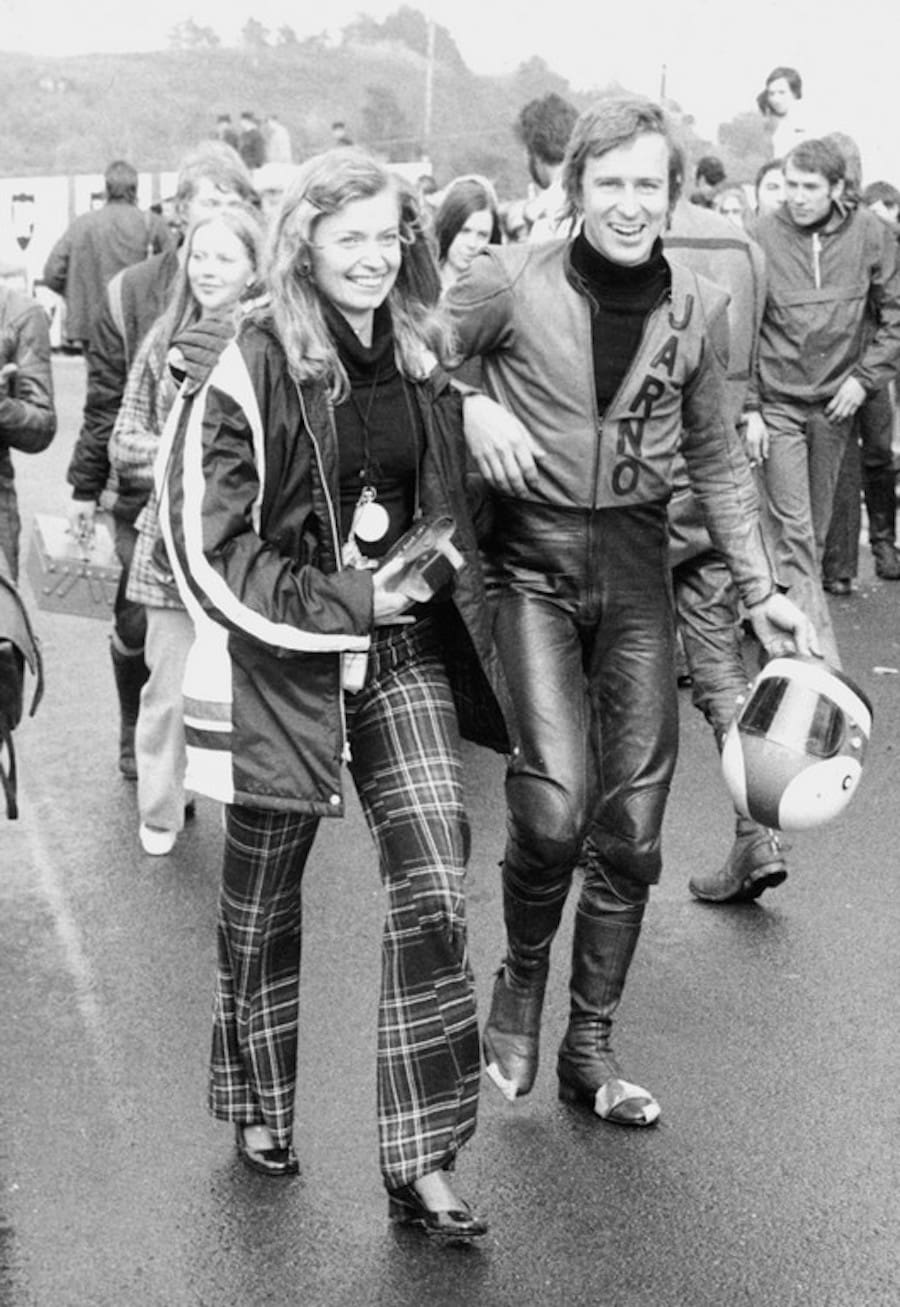
At the Daytona 200 in March, Saarinen on a TZ350 won, easing up by 38 seconds from Yamaha teammate Kel Carruthers, having been as much as 50 seconds ahead. The following month in the Imola 200, he won the first 100-mile (160km) leg from Bruno Spaggiari (Ducati) by more than 40 seconds and the second leg from Walter Villa (Kawasaki) by 34 seconds.
At the opening 500cc GP of the year at Paul Ricard, Saarinen – making his 500cc race debut aboard the new Yamaha YZR500 – defeated the MV Agusta of Read by 16 seconds after Ago on the other MV had fallen trying to catch the lightning fast Finn.
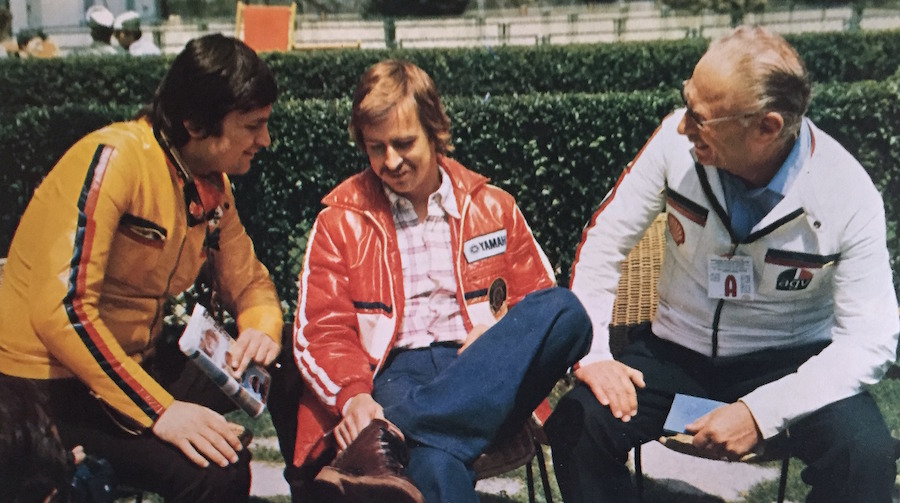
Saarinen relaxes with friend Claudio Costa and his father Checco Costa, founder of the Imola circuit
Jarno was more dominant at a wet and cold Salzburgring, finishing 25 seconds ahead of his Yamaha teammate, Hideo Kanaya.
Big wins were not uncommon in the era, but there was something quite different about this hard-riding 500 debutant. His winning margins in the first three 250cc grands prix of 1973 were 28, 13 and 22 seconds.

Jarno and his wife Soili were a popular presence on the international race scene
Despite this searing dominance, Saarinen said that he didn’t intend to race for much longer. He often talked about retiring from racing due to its inherent dangers and his hatred of ever-increasing Armco barriers. As early as May 1972, even before he won the 250 world title, he said he was considering retiring at the end of year.
“I want to live to be an old man,” he said in a revealing interview conducted by the late John Brown in early 1973.
“Racing is risky, and when you have to race all the time like I have to, this risk grows. For two, three years, even four, it is possible to keep racing without getting badly hurt or even killed. After that, the odds start to shorten. I have no intention of racing many more years. Another two or three at the most.”
Only five months after that interview was published, Saarinen lost his life, along with Renzo Pasolini, in a horrific multi-bike crash on the first lap of the 250cc Nations Grand Prix at Monza on 20 May 1973, after Pasolini’s bike seized.
Decades later, on 18 July 2009 at Sachensring, Saarinen, who achieved a total of 15 GP wins and 32 podiums in the 50cc, 250cc, 350cc and 500cc classes, was belatedly inducted into the MotoGP Hall of Fame. His widow Soili was in attendance, along with Saarinen’s two brothers.

Dr Costa and Jarno
Dr Claudio Costa is the famous physician who played a crucial role in saving Mick Doohan’s leg, enabling the Australian to go on to win five world 500cc championships.
Costa has been lauded for the commendable work he has done with his ‘Clinica Mobile’ service, which he first provided to GP bike racing from the 1977 Austrian Grand Prix until Dr Michele Zasa took over in 2014.
Costa’s love of racing was surely tested over the years with the many injuries and tragedies that he has confronted. But the most painful and heartbreaking losses were those of Jarno Saarinen and Renzo Pasolini at Monza, where a young Costa was present.
While the experience could have destroyed the doctor’s love of bike racing, the overwhelming grief and despair of that dreadful double tragedy drove him to continue, thanks to his close friendship with Saarinen.
Costa’s father, Francesco ‘Checco’ Costa, designed and inspired the Imola circuit, which held its first race in April 1953. So young Claudio was drawn into the world of motorcycle racing, like a new ‘home’ in his own words.
In his fascinating 2002 book Doctorcosta, Costa recounted the Monza tragedy, the lead up to it, the enormous guilt he still carries, and the special relationship he had with one of the fastest riders of all time.
“Only once did I meditate leaving this ‘home’ that my father’s vivid imagination handed me,” he wrote. “It was Sunday on 20 May 1973 at Monza.”
Two months earlier, an international race had been organised by Costa’s father and his partners at Imola. Saarinen was battling in the rain with Agostini in the 350 race. As he came to the Tamburello, one of motorcycling’s most thrilling and dangerous corners, Saarinen fell heavily.
“The apprehension was great; Jarno arrived at the small trackside hospital conscious and calm, more than anything dismayed at having fallen,” Costa said. “As he stripped off his mud-covered leathers he put us at ease, convinced that his injuries were superficial. But the right knee was beginning to trouble him.

“I examined him again. Unable to find anything wrong, I suggested he apply plenty of ice to the knee as it could swell.
“In the evening, as we were having supper, his translator Giovanni Fantazzini urged me to take another look at Jarno in his hotel room.
“I found him lying on the bed, his wife Soili sitting next to him looking thoughtful. There was a lot of ice packed around his knee.
“Smiling, he started to talk in German: ‘You told me that this knee would have swollen and now that you’ve been proved right, you’re going to have to do something about it because I want to race on 1 April at Misano, 8 April at Modena, 15 April at the Imola 200 and 22 April during the ‘first’ World Championship race in France at Le Castellet’.”
Instead of setting the injury in a cast, Costa made a support that allowed Saarinen to race at Misano, but at Modena the doctor suggested that he sit out the second race after he’d gently put his knee through its paces in the first race, as planned.
Costa said he will never forget Saarinen’s crushed look nor his “disturbing reply”. Jarno told Costa, “If you want to keep being my doctor, providing me with proper treatment won’t be enough because you’ll have to abandon any reservation you might feel in letting me to return to racing as soon as I’m able. Give me the truth about my condition and after that any responsibility is mine.”
Of the appalling evening after Saarinen’s fatal accident, Costa wrote: “I cried like a child, blaming myself over and over for not having encased him in plaster for two months.”
Costa, though, salved his pain with this reflection: “The loss of a life well lived is, no matter how sad, a natural fatality. To lose a life without living is, though, a mortal sin. Every time I help a rider back in the saddle, it is Jarno’s smiling face that encourages me. He taught me that we can choose to be men, and that joy is drunk from the same cup that contains grief.”
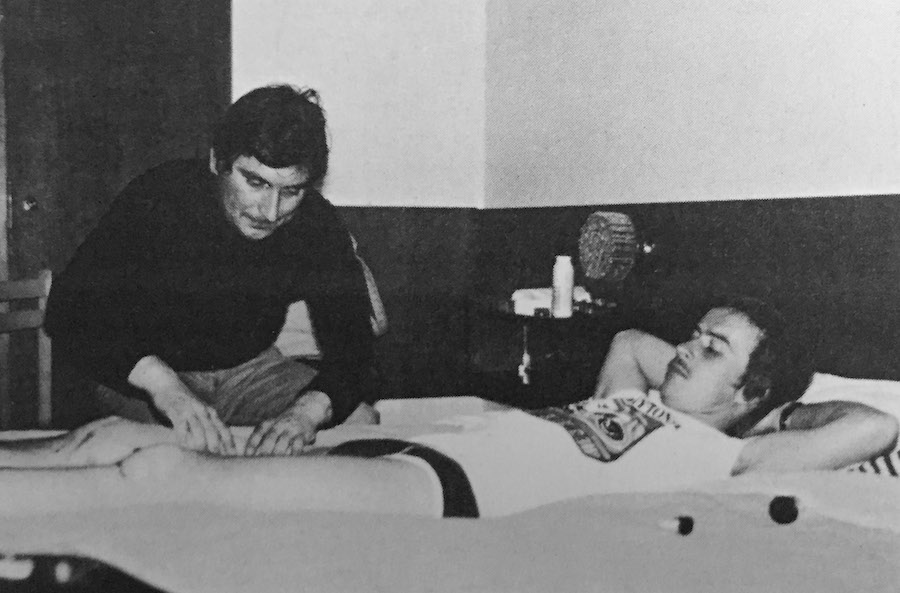
A young Claudio Costa attends to Saarinen’s injured leg and (below) accompanies Àlex Crivillé to hospital more than 20 years later
Jarno in the USA
Jarno Saarinen only competed in America twice, but the legacy of those visits still lives on today.
When the newly crowned world 250 champion ventured to Ontario Motor Speedway outside LA in late 1972, little did he know that the torch he had lit would be passed on to a promising 22-year-old dirt-tracker from Modesto. Young Kenny Roberts was in his first year with Yamaha USA, where he was mentored by team boss and teammate Kel Carruthers in the curious art of road racing. At Ontario, Saarinen inadvertently taught Roberts a new style of riding whose DNA exists in every GP rider since right up to Johan Zarco.
Using Carruthers’ straight-in-the seat style, road race rookie Roberts was having trouble in Ontario’s looping, slow corners. He observed that two European riders were the fastest in those turns, which had a huge impact on him, and the sport.
“At Ontario, I decided that I would hang off the bike like Paul Smart and Jarno Saarinen, and use my weight to steer, to pull the bike around especially in slow turns. I tried it in the second leg and I was much more comfortable in those turns.”
“Smart hung off, but sat high. Saarinen hung off but stayed low on the bike, and that was the style I copied. I thought about it all winter, thought about going into these turns, how much to lean off and when. And then at Daytona [in 1973], I went out and did it.”
By 1974, Roberts was regularly dragging his knee, and the rest of the world followed.
Saarinen returned to America for the ’73 Daytona 200, where he joined Carruthers in the Yamaha USA team. Carruthers told Don Cox some years ago that Jarno was the last world champion to have come up through the GP ranks working on his own bikes. At Daytona, the meticulous Finn was still at it.
The 200-mile race was the longest of Jarno’s career and he wanted to ensure that his new water-cooled TZ350 would go the distance on the long, high-speed banking. He asked to see a 350 crankshaft and, after inspecting it, hit it repeatedly with a ball-peen hammer in an attempt to shot-peen strength into the key component. Then he asked Kel for another crank, repeating the same process. And another.
After many of the big 750s crashed or blew, Jarno led home an historic Yamaha 1-2, with team chief Carruthers second.

Jarno and the Italian connection
So beloved was Jarno Saarinen in Italy that the country’s two most successful factories were clamouring for his signature after he won the 1972 250 world title. But while the Latins have a passionate way of doing things, the ice-cool Finn was ruled by a clinical calm. He came close to racing with Ducati for 1973, but the pressure of the Italian press had already got to him even before he threw a leg over the bike.
There was a strong chance of Jarno joining Benelli, but Yamaha stepped up its efforts to retain the bright hope of racing, and won. It had to resort to a full works contract – something Yamaha hadn’t tabled in several years – to get him. Yamaha’s success in retaining Saarinen led to Benelli cancelling its racing plans.
All this was proof of the Finn’s immense power on and off the track. With just one world crown to his name, he could still make or break a factory, no matter how big or small.

After media speculation had mounted about him moving to Ducati, Saarinen said, “It all became too much for me, so I left before testing a Ducati that the factory intended to tailor for me, hoping I would race for them at the Imola 200.
“The money was not the most important thing. I wanted the best bikes I could get and, although I found the 500 Benelli competitive against the MV, I felt that the 350 needed quite a lot more power to beat either the Yamaha or the MV.”
Italy’s adulation for Saarinen continues in the world’s most passionate bike nation. Established in 1977, the only active Jarno Saarinen fan club in the world is based in Italy.
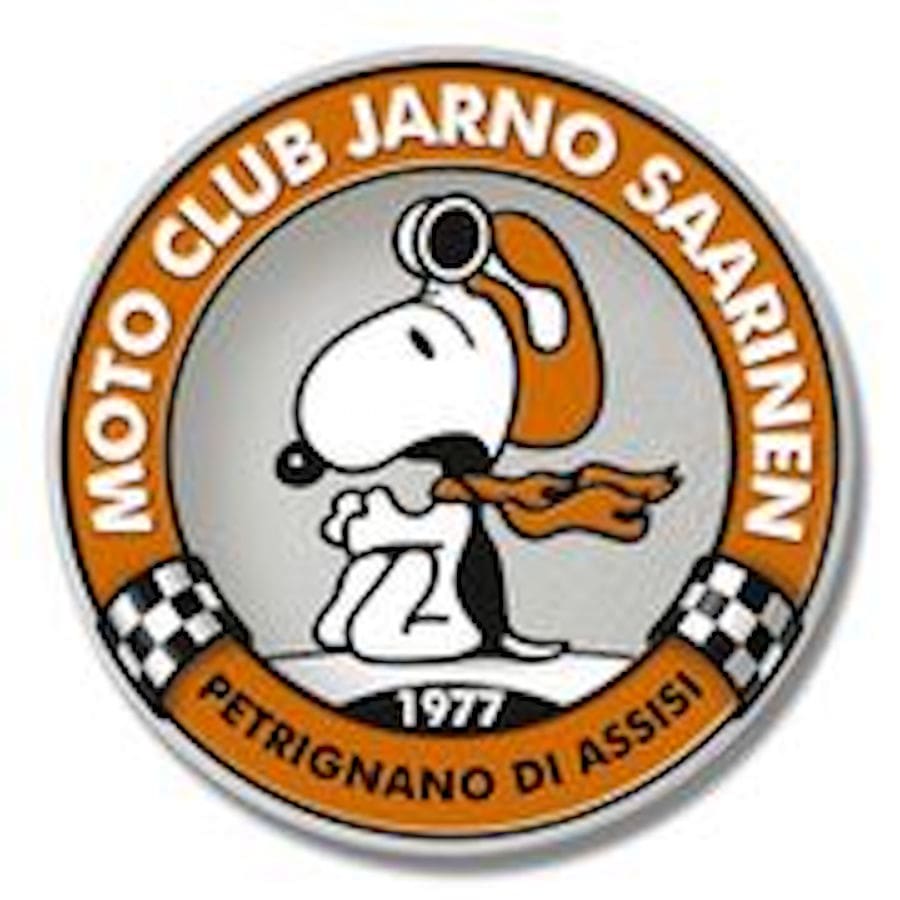
WORDS DARRYL FLACK
PHOTOS François Beau, Marco Caroli & AMCN archives
